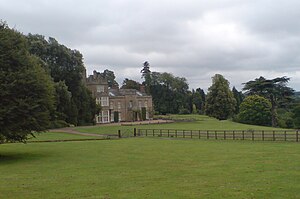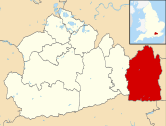
Duke of Sutherland is a title in the Peerage of the United Kingdom which was created by William IV in 1833 for George Leveson-Gower, 2nd Marquess of Stafford. A series of marriages to heiresses by members of the Leveson-Gower family made the Dukes of Sutherland one of the richest landowning families in the United Kingdom. The title remained in the Leveson-Gower family until the death of the 5th Duke of Sutherland in 1963, when it passed to the 5th Earl of Ellesmere from the Egerton family.

Oxted is a town and civil parish in the Tandridge district of Surrey, England, at the foot of the North Downs. It is 9 miles (14 km) south south-east of Croydon in Greater London, 8.5 miles (13.7 km) west of Sevenoaks in Kent, and 9 miles (14 km) north of East Grinstead in West Sussex.
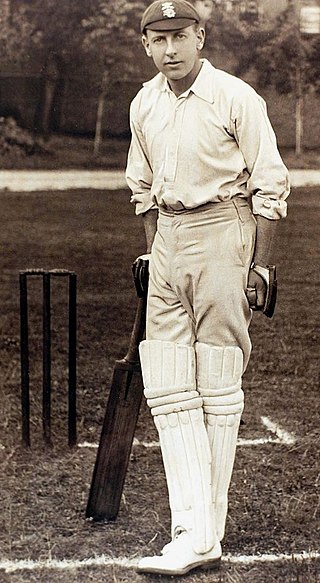
Sir Henry Dudley Gresham Leveson Gower was an English cricketer from the Leveson-Gower family. He played first-class cricket for Oxford University and Surrey and captained England in Test cricket. His school nickname "Shrimp" remained with him through his life, but few cricket sources refer to him by anything other than his initials. He was a selector for the England cricket team, and a cricketing knight.
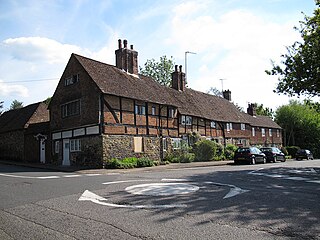
Limpsfield is a village and civil parish in Surrey, England, at the foot of the North Downs close to Oxted railway station and the A25. The composer Frederick Delius and orchestral conductor Sir Thomas Beecham are buried in the village churchyard and there are 89 listed buildings.
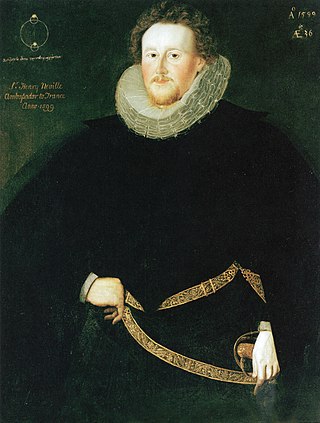
Sir Henry Neville was an English courtier, politician and diplomat, noted for his role as ambassador to France and his unsuccessful attempts to negotiate between James I of England and the Houses of Parliament. In 2005, Neville was put forward as a candidate for the authorship of Shakespeare's works.

Woldingham is a village and civil parish high on the North Downs between Oxted and Warlingham in Surrey, England, within the M25, 17.5 miles (28.2 km) southeast of London. The village has 2,141 inhabitants, many of whom commute to London, making Woldingham part of the London commuter belt. The village is served by the Oxted line and central London can be reached in 33 minutes by train.

Tatsfield is a village and civil parish in the Tandridge District of Surrey, England. It is located 3.3 miles north west of Westerham and 3.9 miles north east of Oxted, and is adjacent to the Surrey border with both Greater London and Kent.

Lilleshall Hall is a large former country house and estate in the fields of Lilleshall, Shropshire, England.
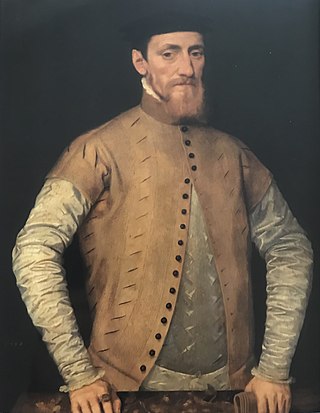
Sir John Gresham was an English merchant, courtier and financier who worked for King Henry VIII of England, Cardinal Wolsey and Thomas Cromwell. He was Lord Mayor of London and founded Gresham's School. He was the brother of Sir Richard Gresham.
Sir Henry Neville of Billingbear House, Berkshire, was a Gentleman of the Privy Chamber to King Henry VIII.
The list of known High Sheriffs of Surrey extends back to 1066. At various times the High Sheriff of Surrey was also High Sheriff of Sussex.
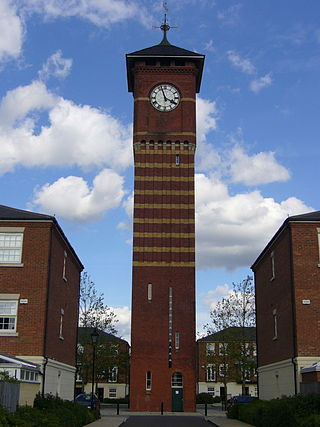
Chelsham is a village in the civil parish of Chelsham and Farleigh and the Tandridge District of Surrey, England. It is located in the Metropolitan Green Belt, 15.3 miles (24.6 km) from London, 3 miles (4.8 km) from Oxted and 23.8 miles (38.3 km) from Guildford.
Frederick Archibald Gresham Leveson Gower was an English first-class cricketer and clergyman. He was a member of the Leveson-Gower family. He played first-class cricket for several teams between 1894 and 1909, while as a clergyman he held a number of ecclesiastical posts across the South of England.

Goodnestone Park is a stately home and gardens in the southern part of the village of Goodnestone, Dover, Kent. It is approximately 7 miles (11 km) from Canterbury. The palladian house was built in 1704 by Brook Bridges, 1st Baronet. His grandson, Brook Bridges' daughter, Elizabeth, married Jane Austen's brother, and Austen visited them on the estate regularly. Goodnestone House is a Grade II* listed building, enlisted on 13 October 1952. The 15 acres (6.1 ha) gardens are considered to be amongst the finest in southeastern England. Previously the seat of the Bridges Baronets, it is now owned by their heirs, the Barons FitzWalter.
Sir Marmaduke Gresham, 1st Baronet was an English politician who sat in the House of Commons in 1660 and from 1685 to 1689.
Sir Thomas Gresham was an English landowner and politician who sat in the House of Commons between 1604 and 1622.

Sir Edward Littleton of Pillaton Hall, 4th Baronet, was a long-lived Staffordshire landowner and MP from the extended Littleton/Lyttelton family, who represented Staffordshire in the Parliament of Great Britain and the Parliament of the United Kingdom for a total of 28 years. The last of the Littleton Baronets of Pillaton Hall, he transferred the family seat from eponymous Pillaton to Teddesley Hall, and died childless, leaving the estates to his great-nephew, Edward Walhouse, who became Edward Littleton, 1st Baron Hatherton.
Colin McIver was an English cricketer. He played for Essex between 1902 and 1934.
Granville William Gresham Leveson-Gower JP DL FSA was a British Liberal Party politician.
Sir William Uvedale was an English soldier and courtier.
